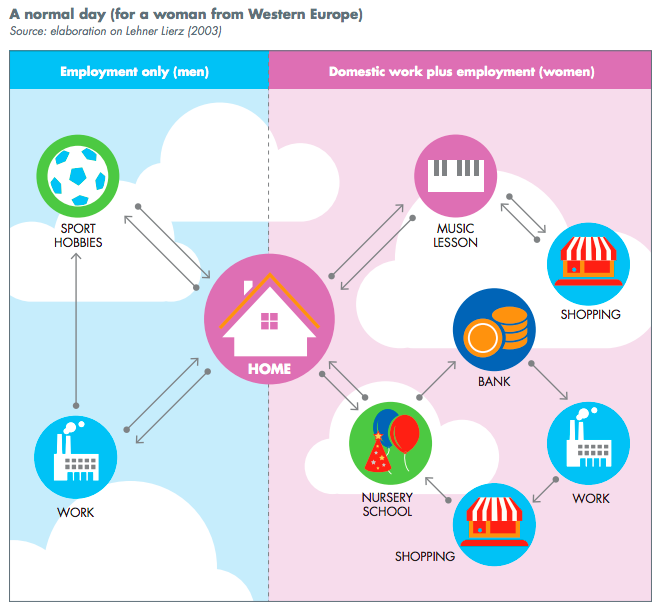What is ‘trip-chaining’ and why is it important?

In her book ‘Invisible Women’, Caroline Criado-Perez explains it as a travel pattern consisting of several interconnected trips, which combine commuting with care activities, such as picking up the kids after going to the market, taking the older relatives to a doctor’s appointment, etc. Figures in a city like London show that women are 25% more likely to trip-chain. The number increases globally where women perform 75% of the unpaid care work and are 80% more likely to trip-chain.
Although women are the main users of public transport systems (and thus, more dependent on this mode), there is still plenty of room for improvement: 6 in 10 women in major Latin American cities report they’ve been physically harassed while using transport systems as explained by the organization hosted by the World Bank.
Gender has a profound impact in determining mobility needs and patterns. This needs to be understood to plan and facilitate mobility for all. While there is still a long road ahead to achieve the UN’s Gender Equity Development Goal (SDG 5), there are many cities, organizations, companies, and people working for more sustainable, equal and safe mobility for all. In Keita Mobility Factory we proudly base our work on this principle, we make mobility software like our mobility microincentives management platform Rideal which can serve as a powerful tool to achieve societal goals and attain more gender-inclusive mobility.



